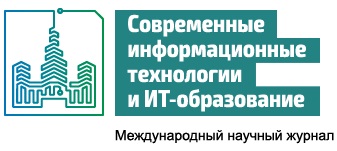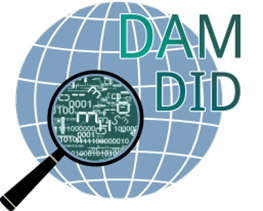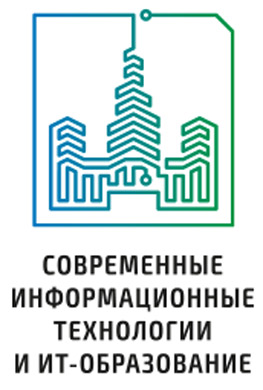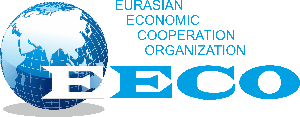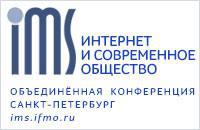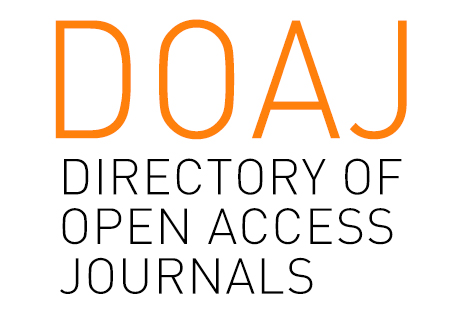A Software Module for Building an Optimal Schedule for Processing Raw Materials
Abstract
One of the areas of application of software is the organization of the technological process, the scheduling of the equipment. The importance of the problem of optimization of the technological regime is explained by the fact that often a change in the schedule does not require the involvement of additional resources, and the return on the choice of the optimal sequence of standard operations is sometimes comparable to the gain from the modernization of equipment. The purpose of this study is to develop a software module for drawing up an optimal sugar beet processing schedule. The created software module is based on the optimization method, which can be considered as a modified branch-and-bound method or a modified dynamic programming method. The constructed algorithm based on the ideas of the branch and bound method can significantly reduce the required number of calculations and comparisons. The program module was implemented in the Python 3 programming language. Despite the low speed of interpreted languages, this choice allows, on the one hand, to speed up the development of a prototype, and, on the other hand, allows further use of modules for fast processing of arrays. The first subroutine implements the initialization of the dictionary, in which a permutation leading to the maximum output and the value of this output corresponds to the key containing a combination of two elements of the set of numbers of technological stages. Due to the structure of the dictionary, the search is very easy. To compare the efficiency of the created software, a greedy algorithm was also implemented. His strategy is that at each technological stage, the beet variety is processed that provides the highest product yield at this stage. The sugar yield obtained by the "greedy" algorithm is less than or equal to the maximum yield, however, it is shown that the "greedy" strategy provides a large yield only at the first stages of technological processing, and loses at the last stages in comparison with the implemented optimal algorithm.
References
2. Villalobos J.R., Soto-Silva W.E., González-Araya M.C., González-Ramirez R.G. Research directions in technology development to support real-time decisions of fresh produce logistics: A review and research agenda. Computers and Electronics in Agriculture. 2019; 167:105092. (In Eng.) DOI: https://doi.org/ 10.1016/j.compag.2019.105092
3. Skripnikov Yu.G. Hranenie i pererabotka ovoshhej, plodov i jagod [Storage and processing of vegetables, fruits and berries]. Agropromizdat, Moscow; 1986. 208 p. (In Russ.)
4. Shirokov E.P. Tehnologija hranenija i pererabotki plodov i ovoshhej s osnovami standartizacii [Technology of storage and processing of fruits and vegetables with the basics of standardization]. Agropromizdat, Moscow; 1988. 319 p. (In Russ.)
5. Manzhesov V.I. et al. Tehnologija hranenija, pererabotki i standartizacija rastenievodcheskoj produkcii [Storage technology, processing and standardization of crop products]. Troitsky Most, SPb; 2014. 704 p. (In Russ.)
6. Nematollahi M., Tajbakhsh A. Past, present, and prospective themes of sustainable agricultural supply chains: A content analysis. Journal of Cleaner Production. 2020; 271: 122201 . (In Eng.) DOI: https://doi.org/10.1016/j.jclepro.2020.122201
7. Behzadi G., O’Sullivan M.J., Olsen T.L., Zhang A. Agribusiness Supply Chain Risk Management: A Review of Quantitative Decision Models. Omega. 2017; 79:21-42. (In Eng.) DOI: https://doi.org/10.1016/j.omega.2017.07.005
8. Luo J., Ji Ch., Qiu Ch., Jia F. Agri-Food Supply Chain Management: Bibliometric and Content Analyses. Sustainability. 2018; 10(5):1573. (In Eng.) DOI: https://doi.org/10.3390/su10051573
9. Siddh M.M., Soni G., Jain R., Sharma M.K., Yadav V. Agri-fresh food supply chain quality (AFSCQ): a literature review. Industrial Management & Data Systems. 2017; 117(9):2015-2044. (In Eng.) DOI: https://doi.org/10.1108/IMDS-10-2016-0427
10. Shukla M., Jharkharia S. Agri-fresh produce supply chain management: a state-of-the-art literature review. International Journal of Operations & Production Management. 2013; 33(2):114-158. (In Eng.) DOI: https://doi.org/10.1108/01443571311295608
11. Li J., Gao X., Guo B., et al. Production plan for perishable agricultural products with two types of harvesting. Information Processing in Agriculture. 2020; 7(1):83-92. (In Eng.) DOI: https://doi.org/10.1016/j.inpa.2019.05.001
12. Kusumastuti R.D., Pieter van Donk D., Teunter R. Crop-related harvesting and processing planning: a review. International Journal of Production Economics. 2016; 174:76-92. (In Eng.) DOI: http://dx.doi.org/10.1016/j.ijpe.2016.01.010
13. Grunow M., Gunther H.-O., Westinner R. Supply optimization for the production of raw sugar. International Journal of Production Economics. 2007; 110(1-2):224-239. (In Eng.) DOI: https://doi.org/10.1016/j.ijpe.2007.02.019
14. Jiao Z., Higgins A.J., Prestwidge D.B. An integrated statistical and optimisation approach to increasing sugar production within a mill region. Computers and Electronics in Agriculture. 2005; 48(2):170-181. (In Eng.) DOI: https://doi.org/10.1016/j.compag.2005.03.004
15. Morales Chavez M., Sarache W., Costa Y., Soto J. Multiobjetive stochastic scheduling of upstream operations in a sustainable sugarcane supply chain. Journal of Cleaner Production. 2020; 276:123305. (In Eng.) DOI: https://doi.org/10.1016/j.jclepro.2020.123305
16. Junqueira R., Morabito R. Modeling and solving a sugarcane harvest front scheduling problem. International Journal of Production Economics. 2019; 213:150-106. (In Eng.) DOI: https://doi.org/10.1016/j.ijpe.2019.03.009
17. Kukhar V.N., Chernyavsky A.P., Chernyavskaya L.I., Mokanyuk Yu.A. Methods for assessing the technological qualities of sugar beets using indicators of the content of potassium, sodium and α-amine nitrogen, determined in beets and products of its processing. Sahar. 2019; (1):18-36. Available at: https://elibrary.ru/item.asp?id=36791492 (accessed 19.03.2021). (In Russ., abstract in Eng.)
18. Ramos-Castillo M., et al. Optimal agricultural spreading scheduling through surrogate-based optimization and MINLP models. Information Processing in Agriculture. 2021; 8(1):159-172. (In Eng.) DOI: https://doi.org/10.1016/j.inpa.2020.02.005
19. Cheraghalipour A., Roghanian E. A Review of Optimization Researches in the Field of Agricultural Supply Chain. Modern Concepts & Developments in Agronomy. 2020; 5(4):556-560. (In Eng.) DOI: https://doi.org/10.31031/MCDA.2020.05.000619
20. Varas M., Basso F., Maturana S., Osorio D., Pezoa R. A multi-objective approach for supporting wine grape harvest operations. Computers & Industrial Engineering. 2020; 145:106497. (In Eng.) DOI: https://doi.org/ 10.1016/j.cie.2020.106497
21. Bohle C., Maturana S., Vera J. A robust optimization approach to wine grape harvesting scheduling. European Journal of Operational Research. 2010; 200(1):245-252. (In Eng.) DOI: https://doi.org/10.1016/j.ejor.2008.12.003
22. Nguyen T.-D., Nguyen-Quang T., Venkatadri U., Diallo C., Adams M. Mathematical Programming Models for Fresh Fruit Supply Chain Optimization: A Review of the Literature and Emerging Trends. AgriEngineering. 2021; 3(3):519-541. (In Eng.) DOI: https://doi.org/10.3390/agriengineering3030034
23. Taskiner T.¸ Bilgen B. Optimization Models for Harvest and Production Planning in Agri-Food Supply Chain: A Systematic Review. Logistics. 2021; 5(3):52. (In Eng.) DOI: https://doi.org/ 10.3390/logistics5030052
24. Land A.H., Doig A.G. An Automatic Method of Solving Discrete Programming Problems. Econometrica. 1960; 28(3):497-520. (In Eng.) DOI: https://doi.org/10.2307/1910129
25. Khokhlyuk V.I. Metody diskretnoj optimizacii [Discrete Optimisation Methods]. Part 1. NSU, Novosibirsk; 2013. 154 p. (In Russ.)

This work is licensed under a Creative Commons Attribution 4.0 International License.
Publication policy of the journal is based on traditional ethical principles of the Russian scientific periodicals and is built in terms of ethical norms of editors and publishers work stated in Code of Conduct and Best Practice Guidelines for Journal Editors and Code of Conduct for Journal Publishers, developed by the Committee on Publication Ethics (COPE). In the course of publishing editorial board of the journal is led by international rules for copyright protection, statutory regulations of the Russian Federation as well as international standards of publishing.
Authors publishing articles in this journal agree to the following: They retain copyright and grant the journal right of first publication of the work, which is automatically licensed under the Creative Commons Attribution License (CC BY license). Users can use, reuse and build upon the material published in this journal provided that such uses are fully attributed.
